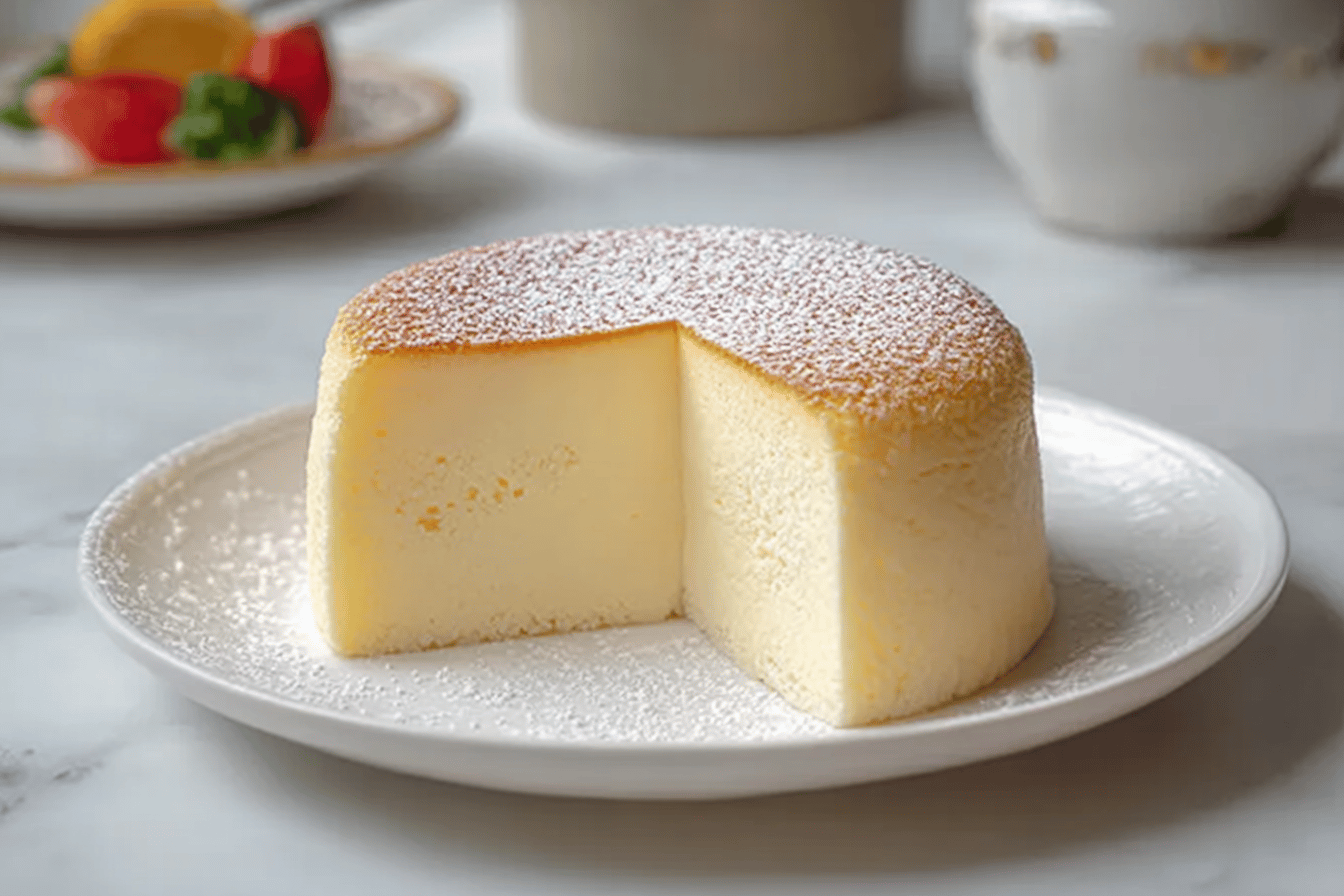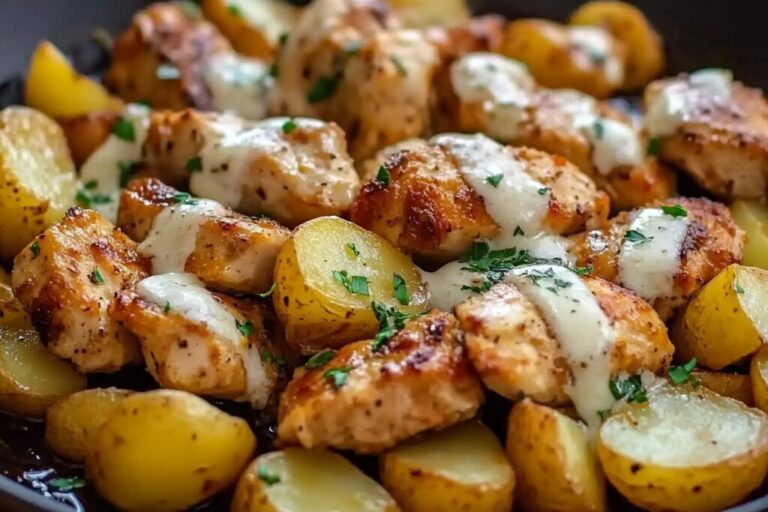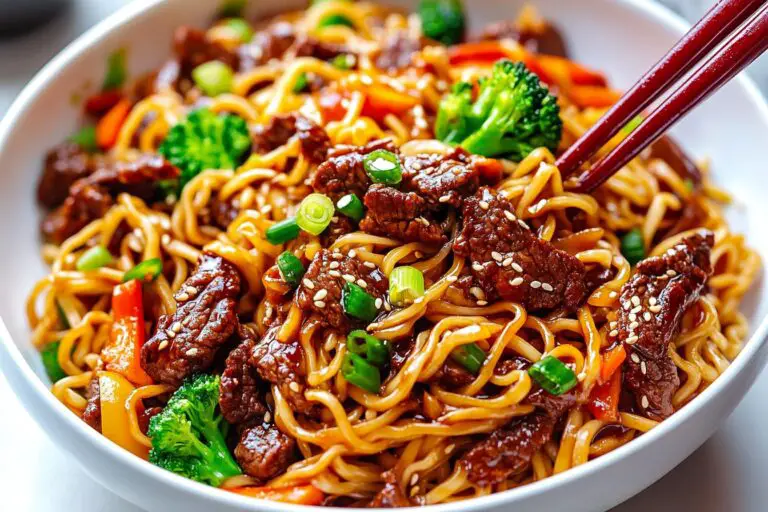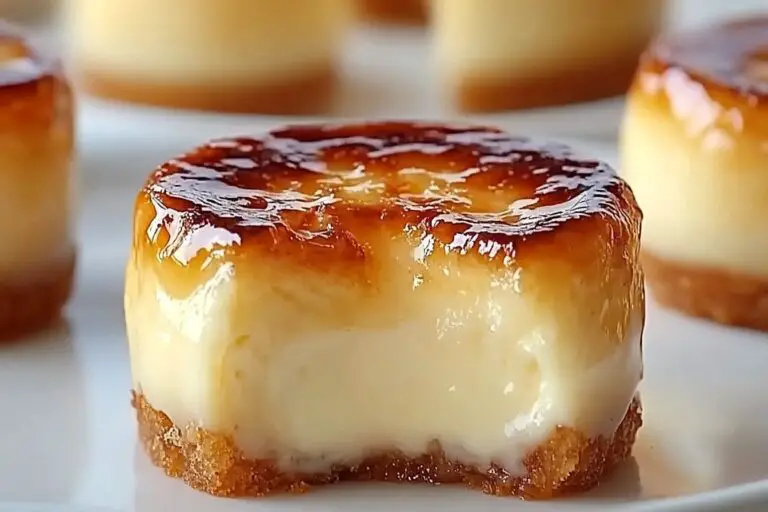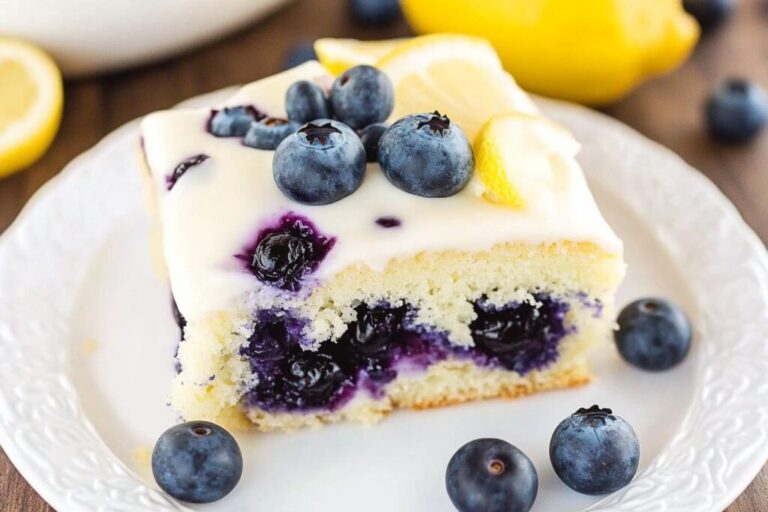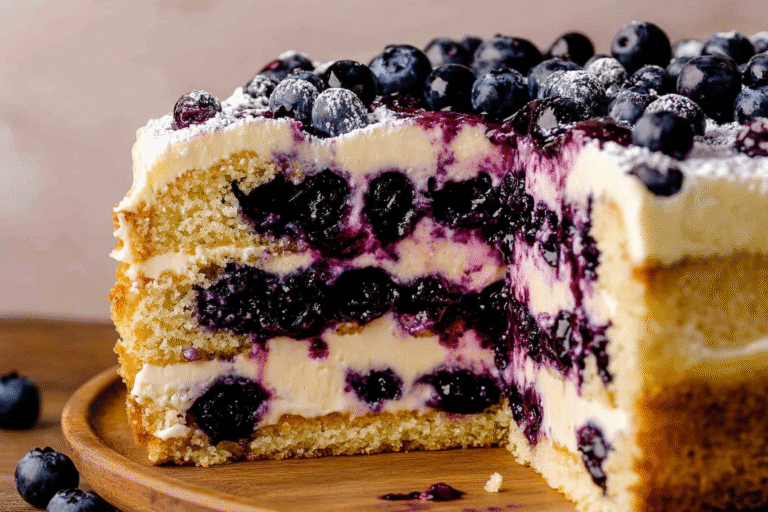Japanese Cotton Cheesecake
Introduction
Are you a cheesecake lover looking for something unique and delightfully airy? Japanese Cotton Cheesecake, also known as “Soufflé Cheesecake,” is a dessert that perfectly combines the richness of traditional cheesecake with the soft and fluffy texture of a sponge cake. This recipe is perfect for anyone who appreciates delicate flavors and an elegant touch to their desserts. Prepare to impress your family and friends with this delightful treat!
Recipe and More
Detailed Ingredients with Measures
To create this gorgeous Japanese Cotton Cheesecake, you’ll need the following ingredients:
– Cream Cheese: 250 grams
– Butter: 50 grams
– Milk: 100 milliliters
– Cake Flour: 60 grams
– Cornstarch: 20 grams
– Egg Yolks: 6
– Egg Whites: 6
– Granulated Sugar: 140 grams
– Lemon Juice: 1 teaspoon
– Vanilla Extract: 1 teaspoon
– Pinch of Salt
Each of these components contributes to the perfect balance of flavors and textures. The cream cheese provides a creamy base, while the cake flour and cornstarch ensure the lightness and softness that define the Japanese Cotton Cheesecake.
Prep Time
Making this dessert requires some preparation, but it is well worth the effort. To begin, ensure all ingredients are at room temperature to make the mixing process seamless. Here’s a breakdown of what you will do in the preparation stage:
1. Preheat your oven to 160°C (320°F), and prepare a baking pan by lining it with parchment paper.
2. Separate the egg yolks and whites, ensuring there is no trace of yolk in the whites. This is crucial for achieving a stiff meringue later.
3. Double-boil the cream cheese, butter, and milk in a heatproof bowl until smooth and lump-free. Allow the mixture to cool before adding the yolks.
4. Sift the cake flour and cornstarch into the mixture to prevent lumps. Stir gently until just combined.
5. Whisk the egg whites with lemon juice and gradually add sugar until a glossy stiff-peak meringue is achieved.
Cook Time, Total Time, Yield
The cook time for your Japanese Cotton Cheesecake is approximately 55 to 65 minutes in a water bath. This ensures even, gentle cooking and prevents the cake from cracking on top.
Including preparation and baking, the total time for this recipe is around 2 hours.
This recipe yields a 6-inch Japanese Cotton Cheesecake, perfect for a small gathering or as a centerpiece dessert for a special occasion.
Final Thoughts
Delicate, fluffy, and irresistibly delicious, Japanese Cotton Cheesecake is an unforgettable dessert that captures the hearts of cheesecake and sponge cake lovers alike. Whether you’re new to baking or a seasoned pro, this recipe offers a chance to create something truly extraordinary—soft as a cloud and meltingly tender at every bite. Enhance your dessert repertoire with this delightful treat and enjoy the sweet satisfaction it delivers every time.
“`html
Detailed Directions and Instructions
Step 1: Preparation
Preheat your oven to 325°F (160°C). Prepare an 8-inch round cake pan by lining the bottom with parchment paper. Wrap the outside of the pan with aluminum foil to prevent water from seeping into the cake during baking. Place a deep roasting pan on the center rack of the oven, as this will be used for the water bath later.
Step 2: Melt Cream Cheese and Butter
In a heatproof bowl, add cream cheese, unsalted butter, and milk. Place the bowl over a pot of simmering water (double boiler method) and whisk until the mixture becomes smooth and creamy. Remove from heat and let it cool slightly.
Step 3: Sift Dry Ingredients
In a medium-sized bowl, sift the cake flour, cornstarch, and salt together. Set aside for later use.
Step 4: Combine and Mix
Separate the egg yolks from the egg whites. Add the egg yolks, one at a time, into the cooled cream cheese mixture while whisking continuously. Add the sifted dry ingredients into the mixture gradually. Stir gently until everything is well incorporated. Add the vanilla extract and lemon juice (if desired) for an additional flavor boost.
Step 5: Whip Egg Whites
In a clean mixing bowl, add the egg whites and cream of tartar (or a small pinch of salt for stabilization). Use an electric hand mixer or stand mixer to whisk the egg whites until soft peaks form. Gradually add the sugar (in three batches) while beating continuously. Whip until the mixture forms stiff peaks.
Step 6: Fold the Mixture
Using a spatula, gently fold the egg whites into the cream cheese mixture in three additions. Be very gentle to avoid deflating the batter. Continue folding until the batter is smooth and well combined.
Step 7: Pour into the Pan
Pour the batter into the prepared pan. Tap the pan gently on the counter to release any trapped air bubbles.
Step 8: Bake in a Water Bath
Place the cake pan into the roasting pan. Fill the roasting pan with hot water, ensuring the water reaches halfway up the side of the cake pan. Bake the cheesecake in the preheated oven for 55 to 65 minutes, or until the top of the cake is lightly golden and the center springs back when gently touched.
Step 9: Cool the Cheesecake
Once baked, turn off the oven and leave the cheesecake inside with the oven door slightly ajar for about 30 minutes. This helps prevent cracking due to sudden temperature changes. Carefully remove the cake from the water bath and allow it to cool completely at room temperature.
Step 10: Refrigerate the Cheesecake
Once the cheesecake has cooled, transfer it to the refrigerator and chill for at least 4 hours or overnight for best results.
Step 11: Serve
Carefully remove the cheesecake from the pan and peel off the parchment paper. Slice and serve the Japanese cotton cheesecake and enjoy its light, fluffy texture.
Notes
Note 1: Use Room Temperature Ingredients
Make sure all ingredients, especially the cream cheese and eggs, are at room temperature. This helps the batter mix together more evenly.
Note 2: Avoid Overmixing
When folding the whipped egg whites into the batter, be gentle and avoid overmixing to preserve the airiness of the batter.
Note 3: Water Bath Tip
Ensure the aluminum foil around the pan is tightly secured to prevent water from leaking into the cake batter during baking. You can also use a silicone cake pan liner for added protection.
Note 4: Testing for Doneness
To check if the cheesecake is done, gently press the center of the cake. It should spring back when touched lightly. Alternatively, you can insert a toothpick into the center; it should come out clean.
Note 5: Storage
Store leftover cheesecake in an airtight container in the refrigerator for up to 3 days. For longer storage, you can freeze individual slices by wrapping them tightly in plastic wrap and placing them in a freezer-safe bag.
Note 6: Adding Lemon Flavor
If you prefer a hint of citrus, adding lemon juice to the batter will elevate the flavor of the cheesecake and balance the creaminess.
Note 7: Serving Suggestions
Serve the cheesecake plain or top with powdered sugar, fresh fruit, or a drizzle of fruit sauce for enhanced presentation and flavor.
“`
Cook Techniques
Preparing the Cream Cheese Base
Ensure your cream cheese is softened at room temperature for a smooth mixture. Use a hand mixer or whisk to eliminate lumps.
Proper Egg White Beating
When beating egg whites, keep your mixing bowl clean and grease-free. Gradually add sugar while beating to achieve a firm peak consistency, which is key for a light and airy texture.
Folding Egg Whites Correctly
Carefully fold the beaten egg whites into the cream cheese mixture in small batches without deflating the air bubbles. This helps maintain the fluffy texture.
Using a Water Bath
To prevent cracks and ensure even baking, place your cake pan inside a larger pan filled with hot water. This keeps the oven environment moist and supports the delicate layers.
Temperature Control
Bake at a low temperature to avoid overcooking and ensure the cheesecake retains its soft and cottony texture. A gradual cool-down in the oven prevents sudden temperature changes that might cause sinking.
FAQ
Why is my Japanese Cotton Cheesecake dense?
A dense texture might result from under-beating egg whites or improperly folding them into the batter. Make sure to achieve firm peaks and fold gently to retain air bubbles.
Why does my cheesecake crack on the surface?
Cracks often occur due to a lack of moisture while baking. Using a water bath and avoiding overbaking can help prevent this issue.
How do I know when the cheesecake is done?
The cheesecake is done when the edges are set but the center slightly jiggles when shaken. Overbaking can dry out the texture.
Can I use low-fat cream cheese?
Using low-fat cream cheese can affect the richness and texture, resulting in a less creamy and smooth cheesecake.
Why did my cheesecake sink in the center?
Sinking can occur if the egg whites were overwhipped or the batter was overmixed, deflating the air structure. Gradual cooling in the oven also helps minimize sinking.
How should I store Japanese Cotton Cheesecake?
Once fully cooled, store the cheesecake in an airtight container in the refrigerator for up to 3-4 days. Allow it to come to room temperature before serving for optimal flavor.
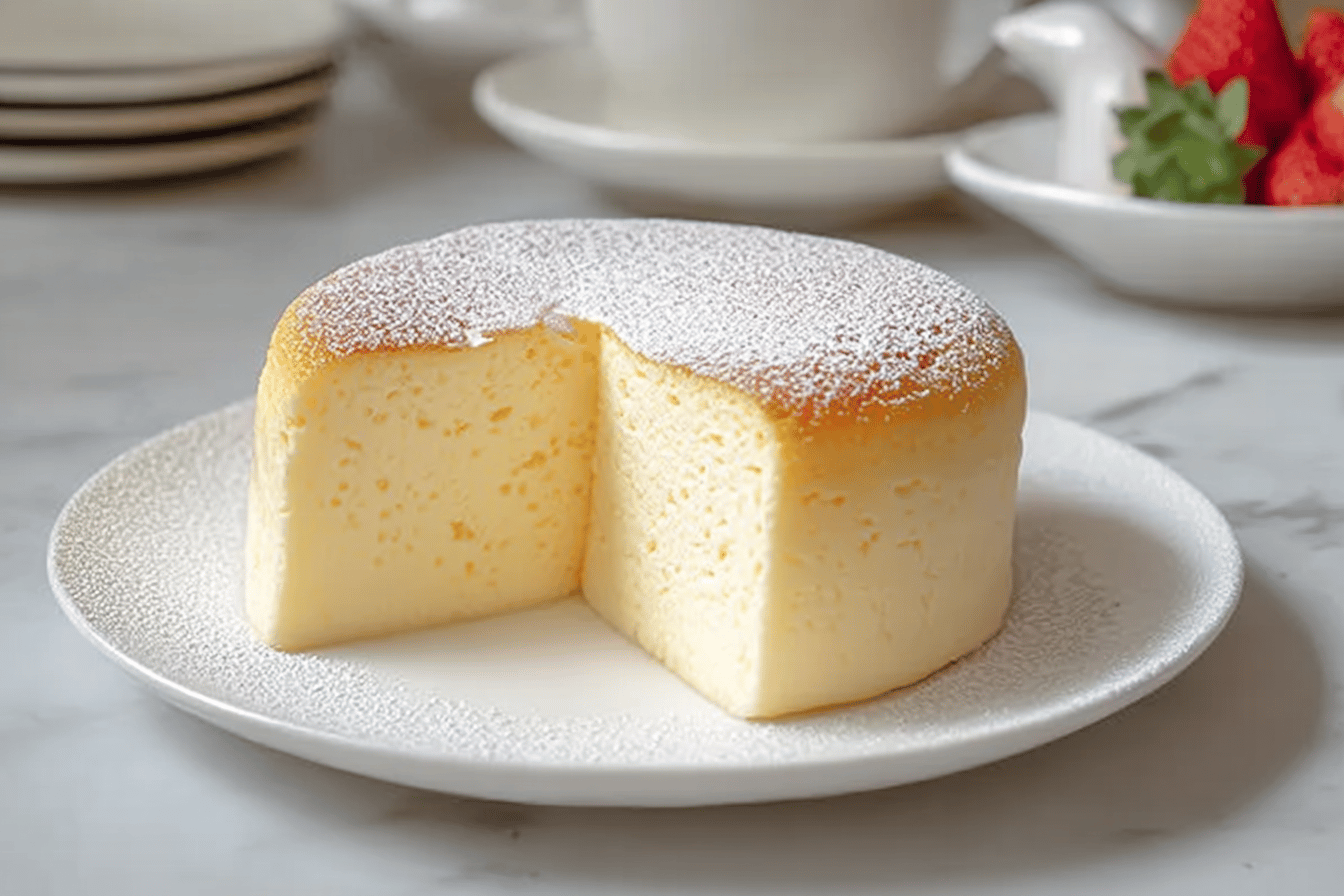
Conclusion
The Japanese Cotton Cheesecake is the perfect blend of rich creaminess and light, airy texture, making it a delightful dessert for any occasion. Its unique, melt-in-your-mouth quality stands out among other cheesecake variations and is bound to impress anyone who takes a bite. By mastering this recipe, you’ll bring both flavor and elegance to your dessert table.
More recipes suggestions and combination
Classic New York Cheesecake
Experiment with the dense and creamy rich flavors of a New York Cheesecake for a more traditional option.
Matcha Cheesecake
Infuse your cheesecake with the delicate, earthy flavor of matcha to add a touch of Japanese flair.
Oreo Cheesecake
Layer crushed Oreos into the batter or use them as a crust for a fun and chocolatey twist.
Strawberry Swirl Cheesecake
Incorporate a fruity element by swirling fresh strawberry puree into the cheesecake before baking.
Vanilla Bean Cheesecake
Enhance the classic flavor with real vanilla beans for an indulgent, aromatic dessert.
Lemon Cheesecake
Add a zesty touch with fresh lemon juice and zest for a refreshing and tangy combination.
Mango Cheesecake
Top your cheesecake with fresh mango chunks or create a puree for a tropical flavor boost.
Chocolate Marble Cheesecake
Create an elegant swirl of chocolate and vanilla layers for a sophisticated and decadent dessert.
Raspberry Cheesecake Bars
Transform your cheesecake into bite-sized bars topped with fresh raspberries for an easy-to-serve option.
Burnt Basque Cheesecake
Try this rustic and caramelized style of cheesecake for a unique and slightly smoky flavor.

